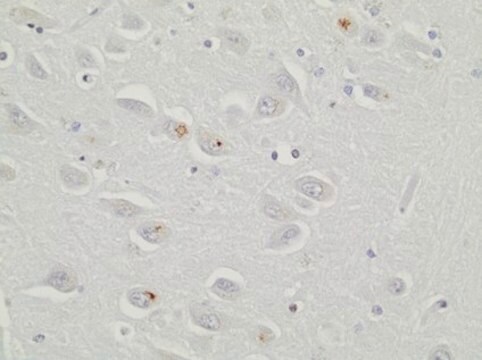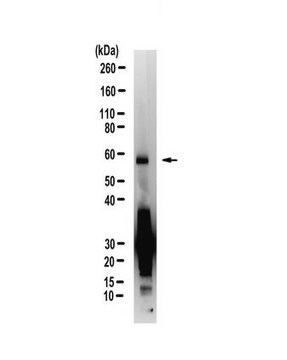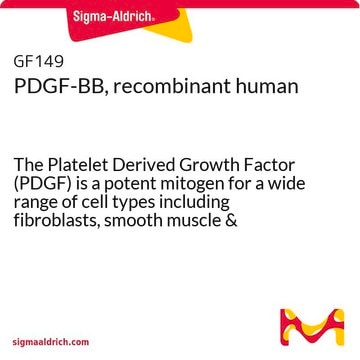ABN1645
Anti-C9ORF72 (long form)
from rabbit
Synonym(e):
C9-L, C9orf72 Long isoform, Protein C9orf72 Long isofrom
About This Item
Empfohlene Produkte
Biologische Quelle
rabbit
Antikörperform
affinity isolated antibody
Antikörper-Produkttyp
primary antibodies
Klon
polyclonal
Speziesreaktivität
human
Methode(n)
immunofluorescence: suitable
immunohistochemistry: suitable
immunoprecipitation (IP): suitable
western blot: suitable
Isotyp
IgG
NCBI-Hinterlegungsnummer
UniProt-Hinterlegungsnummer
Versandbedingung
ambient
Posttranslationale Modifikation Target
unmodified
Angaben zum Gen
human ... C9orf72(203228)
Allgemeine Beschreibung
Spezifität
Immunogen
Anwendung
Neurowissenschaft
Western Blotting Analysis: A representative lot detected C9ORF72 (long form) in different regions of the central nervous system (Xiao, S., et. al. (2015). Ann Neurol. 78(4):568-83).
Immunohistochemistry Analysis: A representative lot detected C9ORF72 (long form) in spinal motor neurons (Xiao, S., et. al. (2015). Ann Neurol. 78(4):568-83).
Immunofluorescence Analysis: A representative lot detected C9ORF72 (short form) in lumbar spinal cord tissue (Xiao, S., et. al. (2015). Ann Neurol. 78(4):568-83).
Qualität
Western Blotting Analysis: A 1:500 dilution of this antibody detected C9ORF72 (long form) in 10 µg of human cerebellum tissue lysate.
Zielbeschreibung
Physikalische Form
Lagerung und Haltbarkeit
Sonstige Hinweise
Haftungsausschluss
Sie haben nicht das passende Produkt gefunden?
Probieren Sie unser Produkt-Auswahlhilfe. aus.
Empfehlung
Lagerklassenschlüssel
12 - Non Combustible Liquids
WGK
WGK 2
Flammpunkt (°F)
Not applicable
Flammpunkt (°C)
Not applicable
Analysenzertifikate (COA)
Suchen Sie nach Analysenzertifikate (COA), indem Sie die Lot-/Chargennummer des Produkts eingeben. Lot- und Chargennummern sind auf dem Produktetikett hinter den Wörtern ‘Lot’ oder ‘Batch’ (Lot oder Charge) zu finden.
Besitzen Sie dieses Produkt bereits?
In der Dokumentenbibliothek finden Sie die Dokumentation zu den Produkten, die Sie kürzlich erworben haben.
Unser Team von Wissenschaftlern verfügt über Erfahrung in allen Forschungsbereichen einschließlich Life Science, Materialwissenschaften, chemischer Synthese, Chromatographie, Analytik und vielen mehr..
Setzen Sie sich mit dem technischen Dienst in Verbindung.








